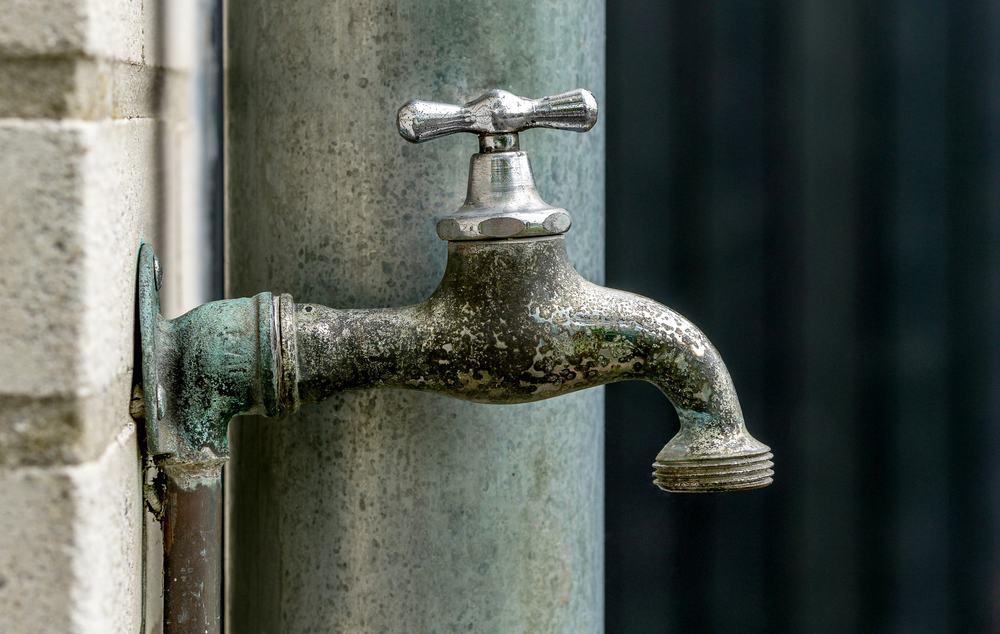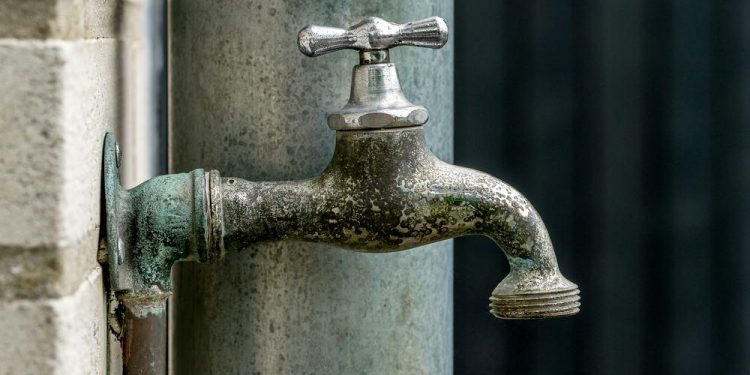Outdoor faucets are convenient for various applications. Watering the garden? Check. Need to set up a sprinkler to water the grass? Check. Need to wash your car? Check. Kids want to play in the water and create a mud pit? Well, we’re not so sure about that one, but check.
If you’re building a new home, implementing a new spigot, or need to buy your garden hose, you’ll need to know what size faucet you have/need. We’re here to give you an overview of everything you need to know, so keep reading to learn more!
You are watching: What Size Pipe Is Normally Used For An Outside Water Faucet?
Quick Overview Of Outdoor Water Faucets
Outdoor faucets, also called hose bibs, allow us to manage outdoor tasks easily. For example, watering your garden or washing your car would be a nuisance if you had to tote buckets of water back and forth. You might be surprised how many buckets of water it takes to rinse away the sudsy remnants of the quick car bath.
So, how do they work? This question might be a bit of a no-brainer, but we’ll look at the answer anyway. The answer: pretty much the same way the indoor faucets do. Yep, you probably guessed it. But, you have to keep a much closer eye on the outdoor tap than you do with your indoor faucets, especially in the winter.

Outdoor faucets are usually mounted on the side of the house, but you might have a freestanding spigot over by your garden or in a pasture to make watering the animals easier (if applicable). Outdoor spigots have threads on the tip of the spout that allows you to connect the hose to the faucet.
The bonnet nut secures the stem of the faucet to its base. The rubber washer helps to seal the water flow when the water isn’t on. The valve seat inside the faucet acts as a gateway that restricts water from flowing when the handle is off. The bonnet also has rubber parts, known as bonnet packing, that helps seal the water at the top of the faucet.
Read more : Indoor-only or outdoor access?
Now that we’ve crossed the basics off our list let’s move on to the specifics surrounding outdoor faucets and their plumbing.
What Kind Of Pipe Do You Use For An Outdoor Faucet?
There are a few types of piping commonly used for outdoor faucets. Copper piping is usually the best choice for scenarios where it’s exposed. If the pipeline runs underground, PEX piping is the best bet.
PEX tubing is considerably easier to install than CPVC plastic (another option for piping) and a lot cheaper than copper piping. If you use PEX, you can use a continuous tubing line from your house to the faucet without needing a single fitting.
Of course, you’ll have some semblance of fittings if you have to run the tubing further than the roll allows, but considering it’s available in rolls over 500 feet long, we don’t think that’ll be a problem.
PEX is a good choice, particularly for outdoor faucets, because it allows for some expansion if the line freezes. However, some damage may still happen, although it’s much less likely to occur with the flexible material than with CPVC plastic. However, it disintegrates in direct sunlight, so you cannot use it for exposed plumbing.
How To Take Care Of An Outdoor Faucet

If you live in a cold climate, you’ll need to take care of your hose bibs in the winter. You can prepare the faucet for the winter by draining the spigot then turning off the water supply to the bib. Generally, the water valve for the outdoor faucet is somewhere inside.
Read more : How to Manage A Trash Can Maggot Infestation
If the water valve is outside, leave it open. This can leave a bit of extra space, allowing for expansion if water was left in the water line. In some cases, allowing the faucet to drip can prevent the pipe from freezing. However, if you live in an area that regularly gets sub-zero temperatures, allowing it to drip might not prevent freezing.
In that case, installing PEX tubing (if underground or otherwise unexposed) might be a better option than PVC or CPVC. Since the tubing is slightly flexible, you may have better luck avoiding cracked pipes (which is a total nightmare).
Are All Outdoor Faucets The Same Size?
Most outdoor faucets are generally one of two standard widths: ½ inch or ¾ inch. In addition, these are the most common widths of water pipes. If you’re building your home or simply implementing a new outdoor faucet, these aspects are important to keep in mind.
If you want stronger water pressure, a ½ inch faucet water pipe may be the better choice. The ¾ inch diameter water pipe isn’t as powerful in pressure. If the water pressure is an important factor for you, you might want to consider this aspect.
How Can I Tell What Size My Outdoor Faucet Is?

If you don’t know what size your outdoor faucet is, you can easily figure it out with a few minutes of your time and a tape measure. You need to measure the inside diameter. So, lay the tape measure over the mouth of the connector, measuring from the inside wall of one side to the opposite inside wall.
Now, if you didn’t realize there were different-sized hose bibs and you already bought a hose, no worries if it’s the wrong size. You can buy an adapter that will connect the hose to the connector if you didn’t end up with the proper hose diameter. The adapter won’t change the water pressure much, but it’ll allow you to connect the wrong size hose diameter with your outdoor faucet.
Source: https://gardencourte.com
Categories: Outdoor

